![A third of patients had a response [to lifileucel], and of the patients who have a response, half of them were alive at the 4-year follow-up.](https://cdn.sanity.io/images/0vv8moc6/cancernetwork/6b7c9a3270c71a70749ba86000cfc78a29d74309-2988x1702.png?w=350&fit=crop&auto=format)
“It’s a treatment for those patients who don’t have any other effective treatments available,” said Muhammad Umair Mushtaq, MD, on lifileucel in melanoma.

Your AI-Trained Oncology Knowledge Connection!

![A third of patients had a response [to lifileucel], and of the patients who have a response, half of them were alive at the 4-year follow-up.](https://cdn.sanity.io/images/0vv8moc6/cancernetwork/6b7c9a3270c71a70749ba86000cfc78a29d74309-2988x1702.png?w=350&fit=crop&auto=format)
“It’s a treatment for those patients who don’t have any other effective treatments available,” said Muhammad Umair Mushtaq, MD, on lifileucel in melanoma.
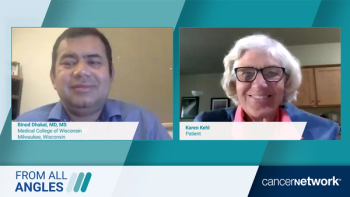
Panelists discuss how the step-up dosing strategy for talquetamab involves graduated dose escalation from 0.01 to 0.06 mg/kg before reaching therapeutic levels to minimize severe cytokine release syndrome, with real-world data showing 85% to 86% of patients can safely receive outpatient step-up dosing, though one patient’s inpatient experience was chosen due to her drug allergies and travel distance considerations.
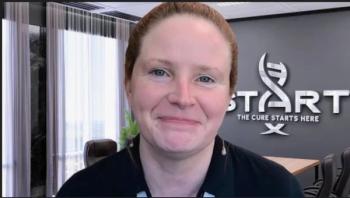
Conducting trials safely within a community setting lies at the heart of a successful collaboration between Northwell Health and START.

“There is margin to improve on these treatments, but this is a real hope for patients with melanoma,” said Mushtaq on TIL therapies.
![We have the current CAR [T-cell therapies], which target CD19; however, we need others.](https://cdn.sanity.io/images/0vv8moc6/cancernetwork/6d5ddb2c2098f525a65b378ece6ca55a114f95fc-2974x1660.png?w=350&fit=crop&auto=format)
Experts at the 2025 National ICE-T Conference discussed the need for improved management of toxicities in patients with leukemia.

The expertise of START's network may streamline the availability of clinical trial enrollment and novel treatment options among patients with cancer.

An expert explains that teclistamab has proven to be a highly effective and well-tolerated therapy for relapsed/refractory multiple myeloma in real-world settings, with outcomes mirroring clinical trials and improved infection management strategies enhancing its safety and accessibility for a broader range of patients.
![“Every patient [with multiple myeloma] should be offered CAR T before they’re offered a bispecific, with some rare exceptions,” said Barry Paul, MD.](https://cdn.sanity.io/images/0vv8moc6/cancernetwork/70a5f0fed7009863fe30cf0740cf32014ebaf5be-2974x1660.png?w=350&fit=crop&auto=format)
“Every patient [with multiple myeloma] should be offered CAR T before they’re offered a bispecific, with some rare exceptions,” said Barry Paul, MD.

A new START center in New York may give patients with advanced malignancies an opportunity to access novel therapies in the community setting.
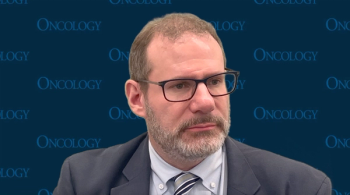
Barry Paul, MD, listed cilta-cel, anito-cel, and arlo-cel as 3 of the CAR T-cell therapies with the most promising efficacy in patients with multiple myeloma.

START is the largest early-phase oncology network in the community-based setting, according to Geraldine O’Sullivan Coyne, MD, PhD, MRCPI.
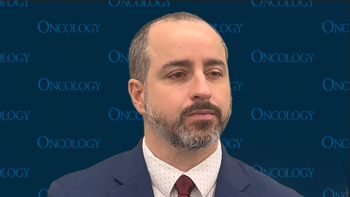
Jose Sandoval Sus, MD, discussed standard CAR T-cell therapies in patients across multiple high-risk lymphoma indications.

Panelists discuss evolving treatment strategies for metastatic melanoma with asymptomatic brain metastases, highlighting the superiority of PD-1 plus CTLA-4 combination therapy for durable intracranial responses, while noting that newer immunotherapy combinations like PD-1 plus LAG-3 show promise but require further evidence before altering current standards of care.

Panelists discuss the current standard of care for metastatic melanoma with asymptomatic brain metastases, emphasizing the durability of CTLA-4 plus PD-1 immunotherapy, the emerging but unproven role of newer combinations like PD-1 plus LAG-3, and the importance of multidisciplinary coordination, patient education, and timely intervention in managing both asymptomatic and symptomatic brain involvement.
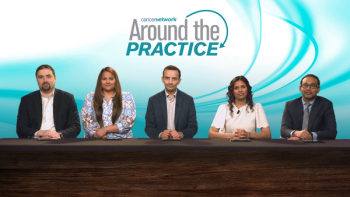
Panelists discuss how a woman aged 69 years with standard-risk relapsed/refractory multiple myeloma (R/R MM), significant comorbidities including chronic obstructive pulmonary disease (COPD) and chronic kidney disease (CKD), and history of respiratory infections would be a reasonable candidate for talquetamab despite infection concerns, citing that GPRC5D-targeting agents show much lower infection rates (less than 10%) compared with B-cell maturation antigen (BCMA) bispecifics (around 50%) due to preferential expression on malignant cells rather than normal B cells, with no requirement for prophylaxis and evidence of preserved humoral immunity including COVID-19 vaccine responses.

Panelists discuss how early use of IDH inhibitors maximizes therapeutic benefit and address resistance mechanisms, noting that tumors typically develop bypass pathways rather than losing the IDH mutation itself.
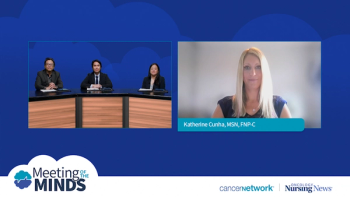
Panelists discuss how dose modifications for ALK inhibitors can significantly improve quality of life issues like brain fog and weight gain while maintaining disease control, emphasizing the importance of multidisciplinary team support including palliative care from diagnosis.

Panelists discuss how the INDIGO trial's compelling results led to early FDA approval of vorasidenib for progressive IDH-mutant gliomas, and how they counsel patients on sequencing IDH inhibitors vs traditional radiation and chemotherapy while considering long-term quality of life implications.

Panelists discuss how managing a high-risk patient aged 64 years who progressed after 11 months on talquetamab with decreased B-cell maturation antigen (BCMA) surface expression presents challenging options, including switching to GPRC5D-targeting agents like talquetamab, pursuing clinical trials, or potentially using sequential bispecifics despite T-cell exhaustion concerns, while noting that the MonumenTAL-1 trial’s prior BCMA-directed therapy cohort showed promising 12-month progression-free survival, although the data are confounded by intervening therapies between treatments.
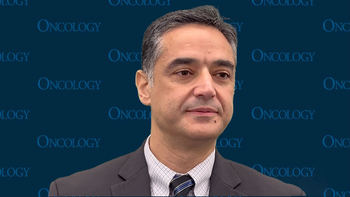
Elucidating nonresponses to bispecific T-cell engagers may be an important research consideration in the multiple myeloma field.

Barriers to access and financial toxicities are challenges that must be addressed for CAR T-cell therapies in LBCL, according to Jose Sandoval Sus, MD.
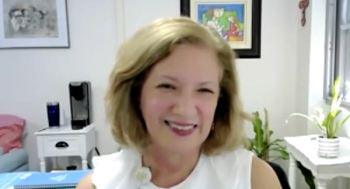
While there is no clear and cut way to transition patients from pediatric to adult care, Maria C. Velez, MD, has established a helpful network of willing clinicians.

Fixed treatment durations with bispecific antibodies followed by observation may help in mitigating infection-related AEs, according to Shebli Atrash, MD.

Panelists discuss how patients educate themselves about multiple myeloma through hospital pamphlets and magazines, online research, and positive attitude books about cancer while emphasizing the critical importance of peer support and mentorship programs where patients can meet with others who have successfully undergone treatments like stem cell transplants, creating comforting group meetings that help alleviate fear and provide hope by seeing healthy survivors share their stories and demonstrate that recovery is possible.

Epistemic closure, broad-scale distribution, and insurance companies are the 3 largest obstacles to implementing new peritoneal surface malignancy care guidelines into practice.

Panelists discuss how multidisciplinary care coordination for chimeric antigen receptor (CAR) T-cell therapy involves registered nurses serving as support persons and liaisons between academic centers and community oncologists, with streamlined communication through direct cell phone access, telehealth consultations to assess candidacy, and coordinated logistics for pretreatment testing, including PET scans, bone marrow biopsies, brain MRIs, and lumbar punctures, while emphasizing that CAR T approval has expanded from fourth-line treatment in 2022 to second-line therapy in 2024, allowing for faster patient access through insurance approval and outpatient T-cell collection processes.

Panelists discuss how talquetamab demonstrates impressive clinical efficacy with approximately 70% response rates in the pivotal MONUMENTAL-1 trial, including patients previously treated with other immunotherapies, and how real-world data from studies like Real Italy corroborate these trial results with similar 67% response rates across diverse patient populations including high-risk subgroups.

Panelists discuss how clinical decision-making between GPRC5D and BCMA-targeting bispecific antibodies involves considering prior treatment history, target switching strategies, and patient-specific factors, with Karen explaining her preference for talquetamab's targeted approach that spares healthy cells, subcutaneous administration convenience, and the advantage of switching to a different antigen target after previous BCMA therapy.

Shebli Atrash, MD, stated that MRD should be considered carefully as an end point given potential recurrence despite MRD negativity.

While Maria C. Velez, MD’s, term as president of ASPHO is only 1 year, she is already confident in ASPHO’s strategic plans.